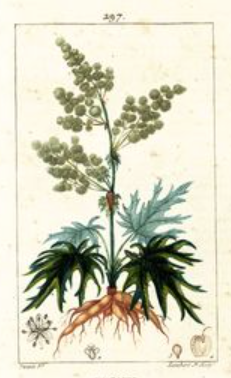The Plant with the Whirligig Leaves
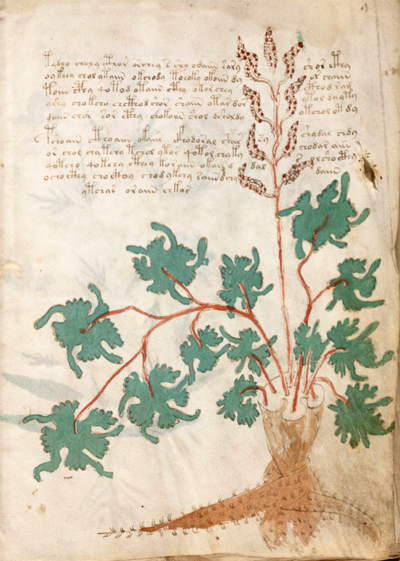 Plant 9r fills most of the page from top to bottom and features a distinctive seed stalk with a long straight, reddish stem, wiggly seed pods extending to both sides, with red seeds as they might look inside their pods.
Plant 9r fills most of the page from top to bottom and features a distinctive seed stalk with a long straight, reddish stem, wiggly seed pods extending to both sides, with red seeds as they might look inside their pods.
The leaf stems are also red, each one featuring a distinctive “rotating” bird-like leaf that must have been quite challenging to draw. I’m fascinated by these leaves, which are more intricate than most of the VMS plants. Each has four long protruding beak-like bumps with graceful curves and rounded ends. Between them are ruffled edges reminiscent of feathers or something else with a bumpy texture.
The root is quite thick and painted brown, with carefully distributed double tufts of hairs and a large flat bole that was left unpainted.
In botanical illustration, boles are usually shown for plants that are grown from root stocks (like roses), or which can be generated from tubers (like potatoes), or which are cut down regularly to encourage new growth, as with quite a few plants that die into the roots in winter and re-emerge in spring. They also sometimes represent aquatic plants (with the “bole” being the surface of the water). I don’t know what it means on the VMS plant, but I suspect that this might be a plant with a very thick or fibrous root with stalks that die back or are cut back in the winter.
Prior Identifications
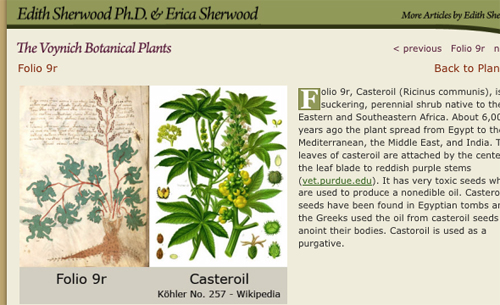 Edith Sherwood has identified this plant as Ricinus communis (castor oil plant), but I strongly disagree with this ID. Ricinus has large round greenish-blue seed pods that are similar to spiny chestnut pods. It does not have pea-like seeds extending outwards in long slender pods. Also, ricinus has very distinctive star-like leaves that really don’t look like those of Plant 9r, even if you stylize them.
Edith Sherwood has identified this plant as Ricinus communis (castor oil plant), but I strongly disagree with this ID. Ricinus has large round greenish-blue seed pods that are similar to spiny chestnut pods. It does not have pea-like seeds extending outwards in long slender pods. Also, ricinus has very distinctive star-like leaves that really don’t look like those of Plant 9r, even if you stylize them.
What convinces me even more that Plant 9r is not Ricinus is that there is quite an accurate drawing of Ricinus on VMS folio 6v. Plant 6v could be either Ricinus or chesnut, but the way the seeds are drawn (at the end of a long stock rather than at the ends of multiple branches) is a bit more similar to Ricinus than the various chestnut species. Either way, it is evident that the VMS illustrator could draw Ricinus or chestnut-like pods quite well and Plant 6r does not look like Ricinus.
Usually I have multiple IDs for any specific VMS plant. Even if you know the plant (e.g., viola), each plant can have several varieties, and it’s hard to pin down an exact species from an amateur drawing. Plant 9r is different. I do have a few alternatives, but only two really grab me and match well to the characteristics of the plant. One is from Eurasia, the other from east Asia. But first, a third alternative that matches less well but does include a reference to birds…
Alternate IDs
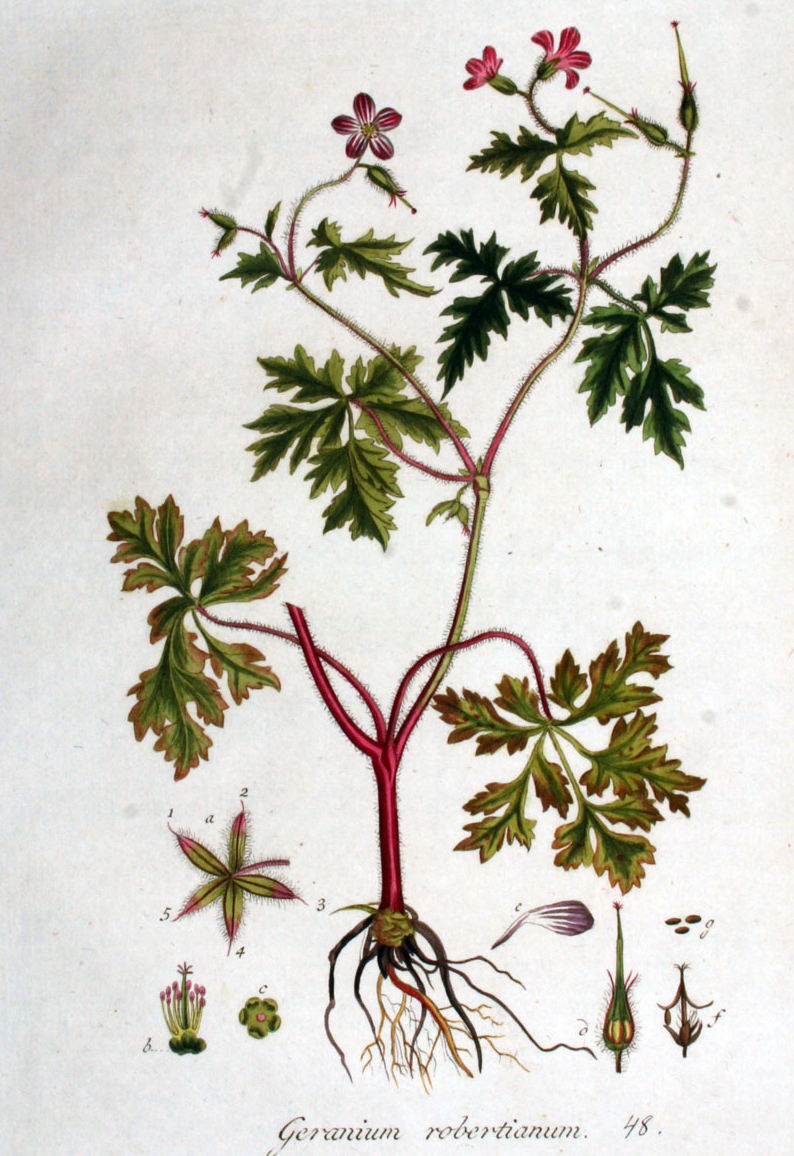 Stinking crane’s bill (Geranium robertianum) is a widespread Eurasian plant with red stems, very intricate leaves, red seeds, and roots that are a little thicker than the stem. It’s not a perfect match to Plant 9r, however. The seeds are individual, with long beaks that look like the heads of cranes. The VMS plant has branching pods with many seeds in each pod—quite a different arrangement.
Stinking crane’s bill (Geranium robertianum) is a widespread Eurasian plant with red stems, very intricate leaves, red seeds, and roots that are a little thicker than the stem. It’s not a perfect match to Plant 9r, however. The seeds are individual, with long beaks that look like the heads of cranes. The VMS plant has branching pods with many seeds in each pod—quite a different arrangement.
It’s tempting to think the bird-like leaves might be a mnemonic for the common name “crane’s bill” or “dove’s foot”, the leaves do have a rather bird-like appearance (they remind me of flying egrets), but it’s hard to believe that the VMS illustrator would display pea-like pods for a plant with beak-like seeds. Also, crane’s bill (known as Herb Robert in the culinary world) is a small delicate plant and does not have a thick base or a prominent bole.
Two Plants with Better Possibilities
There are two plants that look very much like Plant 9r. I’ll describe the east Asian plant first…
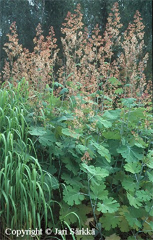
Plume Poppy [Courtesy of Jari Särrkä]
Plume poppy stems are not red but the toxic sap that oozes out when the stem is broken is orange.
The plume poppy does not have pods, so one would have to argue that the VMS seeds represent branching plumes rather than pods, but I’m leaning toward pods, which means there is another plant more similar to Plant 9r than plume poppy…
The plant that seems to hit the most marks is Russian kale.
Russian kale is a popular culinary plant in the mustard family, which is highly variable in shape and size. Russian kale is usually harvested when the leaves are young and the plant is small and bushy, but it can grow quite tall and tree-like, with thick stems. The stalks range from bright red to reddish-purple, and the leaves have very intricate, lacy and sometimes deeply incurled leaves. It is a north-temperate Eurasian plant and thus more likely to be in the VMS than a plant from eastern Asia like the plume poppy.
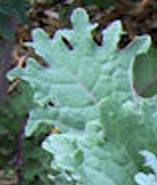 What is particularly interesting about Russian kale, besides the very complex leaf margins, is the seed pods. It has long pea-like pods with seeds that create lines of bumps within the pods, and they are arranged on a long stalk very much like the pods on Plant 9r. They even have a gentle S-curve shape that matches the VMS pods. The only part that doesn’t match is the color. Kale seeds range from a charcoal-brown to black, not the red color of the VMS plant.
What is particularly interesting about Russian kale, besides the very complex leaf margins, is the seed pods. It has long pea-like pods with seeds that create lines of bumps within the pods, and they are arranged on a long stalk very much like the pods on Plant 9r. They even have a gentle S-curve shape that matches the VMS pods. The only part that doesn’t match is the color. Kale seeds range from a charcoal-brown to black, not the red color of the VMS plant.
Most varieties of kale have leaves that grow from a central rosette, but there are a few that branch like the VMS plant, and there are others called “tree kale” that are shaped like mini palm trees (check out Google Image Search for “tree kale” to see some interesting variations). Tree kale might explain the large bole.
It’s not a perfect ID, however. Kale is a biennial. It’s not a perennial like rhubarb that dies back and grows up again from the same stalk each year. I’m tempted to include rhubarb (right) as a possible ID for 9r, but it has the same problems as plume poppy (the seeds are not in pods) and there’s another VMS plant that resembles rhubarb more closely than this one.
The Plant 9r Rorschach Test
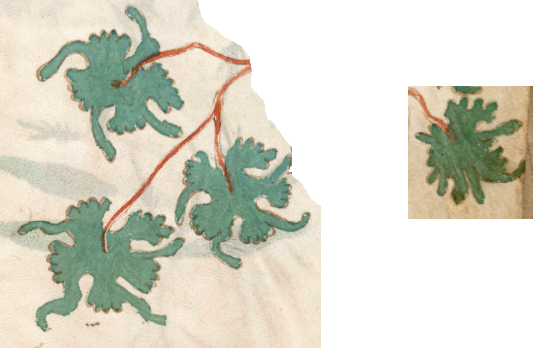 I cannot make sense of the leaves.
I cannot make sense of the leaves.
The lacy edges of kale leaves do somewhat resemble the VMS leaves, especially if you try to flatten them as herbarium specimens but, if Plant 9r is kale, why did the illustrator draw them in such a decorative and regimented way? I also find it hard to get the idea of birds out of my head because they remind me so much of egrets, but they may be something other than birds, like long-tailed sheep or running lions rampant. Note how the leaf on the bottom right looks like natural kale while those on the left almost have legs and heads with wings or garments.
Summary
I tried to find some alternate names that might explain the apparent symbolism in the leaves. In French, kale is known as chou frisé, in German it’s Grünkohl (essentially the same as in Scandinavian languages). Other languages have variations on kel or col—all of which refer to cabbage in rather pedestrian terms. In Greek, it’s λάχανο, in Russian, it’s капуста with various modifiers. In some languages it’s referred to as the plant that is torn (probably a reference to the leaf shapes).
None of these seem to shed any light on the decorative leaves or help to confirm if the plant is kale.
So I’m a bit stumped. I think it’s a reasonably good match for Russian kale, but I don’t fully understand the significance of the leaves. I’ll leave it to your imaginations and if a better idea crosses my mind, I’ll upload it as a postscript.
J.K Petersen
Copyright 2013 J.K. Petersen All Rights Reserved
Originally posted July 2013. Returned to draft mode a couple of weeks later (I was hoping to figure out the meaning of the leaves). Reposted August 2017 without changes to the original post except to crop the pictures (yes, you guessed right, I still haven’t figured out the leaves but I haven’t stopped trying).

